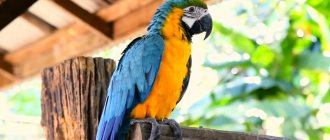Mice are not the most common pets. However, these small rodents are quite unpretentious, easily tamed and can easily be pets. The main thing is not to let them get too close to the wires.
Mice prefer soft bedding, which in nature is replaced by grass. If the litter is infested with parasites, the mouse leaves and looks for another nest. Therefore, if a house mouse does not want to sit in a cage, it is necessary to carry out a total cleaning.
The diet of mice is quite simple: almost any plant seeds (sunflower, cereals, rice, and so on). An indicator of satiety is the accumulation of reserves, which also occurs in natural conditions when there is a sufficient amount of food. Water is also important for mice, but you only need a little of it - about 3 ml per day. It is important to ensure that there is constant water, otherwise the mouse may die quickly from dehydration.
Mice reproduce well in captivity. They need warmth, humidity and food, then the breeding season may not stop. This must be taken into account when keeping mice of different sexes. In a year, one female is capable of giving birth to about 120. Blind and naked mice become covered with hair after 10 days, by the fourteenth they open their eyes, and on the twenty-first day it is quite possible to find a litter of mice running around the rooms in search of a personal nest. In nature, despite their high fertility, mice do not breed too much, as they become prey for predators, but in residential buildings this can become a problem.
Life expectancy of mice at home
At home, they usually keep a decorative breed of mouse. These, as a rule, live longer than wild ones. With the proper quality of life, they easily live up to 2-3 years, and some even cross this line and reach the age of 5 years.
The lifespan of mice varies depending on a number of factors
Pets live longer for a number of reasons:
- Living conditions. Mice are kept in cages that are always warm. In addition, caring owners always clean the inside and keep their pet’s home clean, thereby minimizing the development of various diseases.
- Nutrition. Pets do not have to find their own food, as they receive it regularly. Accordingly, they do not have such a condition as starvation. The food given to rodents contains the nutrients they need.
- No predators. Mice are easy prey for many predators. At home, they are completely safe and are not even exposed to stress, which can be detrimental to them.
Mice can get along well with people
Most often, mice at home die from old age, disease or genetic disorders. Otherwise, they can be considered quite tenacious.
Diseases
As a rule, the cause of the disease is improper care or genetic predisposition. If there is any suspicious change in your rodent's behavior, you should contact your veterinarian. Obvious signs of illness:
- Changes in the shape of teeth, their unequal length.
- Poor appetite.
- Low activity.
- Eye or nasal discharge.
- Diarrhea.
- Weight loss.
- Change in skin texture.
If your mouse is sick, take it to the vet immediately
Lifespan of mice in nature
How long do ferrets live at home?
In general, the age of mice in nature rarely exceeds 14 months, but more often it is about 10 months, which is more than 2 times less than that of domestic mice. This is influenced by a number of features of living in the wild:
- Predators. The big problem with mice is that they can be eaten at any age. They are hunted by snakes, birds, foxes, martens and other enemies.
- Food. In the summer, this problem rarely arises, but many animals do not survive the winter without food. Accordingly, the lifespan of mice is limited to the season when they can feed.
- Climate. Mice are not very picky about their living conditions, but despite this they do not tolerate extreme heat, severe frosts, or temperature fluctuations.
- People. On some level, it is also fashionable to call them enemies of rodents. After all, the latter constantly invade their home in order to find food or shelter. The person, in turn, sets traps, scatters poison and tries in every possible way to get rid of uninvited guests.
Rodents are able to survive in any conditions
It turns out that mice in nature often die from exposure to a number of factors, rather than from their own death.
Breeding
House mice become sexually mature at 30-35 days of age. In females, estrus begins; in males, a sign of maturation is the descent of the testes into the scrotum. It is recommended that females be mated for the first time upon reaching three months of age.
Effective mating is possible only during estrus, which occurs in females every 3-8 days and lasts from 4 to 20 hours. Pregnancy in house mice lasts 22 days.
Approximately in the middle of gestation, the female begins to build a house or nest from the litter in which the pups will be located after birth. She uses wood shavings, scraps of soft fabric, paper, and napkins as building materials. It is important to ensure that all this is at the disposal of the pregnant female.
There are from 5 to 9 mice in a litter. They are born naked, blind and deaf. The weight of a newborn mouse is 1-2 g.
Little mice develop quickly. On the third day they develop hearing, and on the fourth day their bodies are covered with soft fur. By the fifth day of life, their body weight doubles. Two weeks after birth, the eyes open. From this age, domestic mice begin to feed themselves. The young animals are weaned from their mother on the 21st-25th day.
To avoid uncontrolled reproduction, male domestic mice are separated from females.
Many people are not sure whether to get a pet mouse, because this animal has already earned a bad reputation. However, ornamental species of rodents make excellent pets - they are easy to care for, interesting to watch, mice are quickly tamed, and do not require much attention or high maintenance costs.
How long can they live without food and water?
Food is an integral part of the life of any living organism, and rodents are no exception. In general, they rarely go without food, as they feed on everything. During the cold season, mice try to get closer to people, where they can always find something. If the animal does not have this opportunity, then its average lifespan will be 10 days.
How long do red-eared turtles live at home?
Rodents consume water not only directly from reservoirs, but also from succulent herbaceous plants. Accordingly, its shortage occurs extremely rarely. But if you leave a mouse locked in a cage without water, it will not live more than 3 days.
For your information! Babies cannot drink on their own for the first 3 weeks of their lives; they depend on their mother. This means that one mouse will not live more than half a day.
Interaction with other animals
If you have other pets or small children in the house, it is important to ensure the safety of the small rodent.
Do not leave the mouse alone with other animals, it will not be able to fend for itself
When the animal is removed from the cage, the other animals should be in another room. As soon as you turn away, the pet will already try to live.
How does life expectancy depend on breed?
What do mice eat in nature and at home - list of products
How long mice live is also affected by their species. The most common of them are homemade: decorative and white. They are worth considering in more detail. As for other popular breeds:
- Vulcanovaya. They can be kept at home. It is a fairly large specimen, the body length of which can reach 15 cm and weight 60 grams. With proper care, it lives up to 5 years.
- Zebra. It got its name from its striped coat. This breed is not known for its sociability and practically does not go near people, so they can be classified as wild. The lifespan of such a mouse is about 4 years, but only under the condition that a person can still tame it. In nature, they are unlikely to be able to last that long.
- Baby. The smallest type. They treat people with caution and are very timid. At the same time, if you managed to get this rodent, it is not difficult to establish contact with it. Their lifespan is 3 years.
- Fazza. A rodent that has no guard hair, that is, almost bald. They get along with people better than others - they love to play and are very friendly. However, due to the lack of hair, they have a specific smell, so they require special care. They live for about 2 years.
- Satin. It is very rare and famous for its color. He is good friends with people and lives for about 2 years.
- Gerbil. Another species that is often kept at home. They are sociable and, importantly, have virtually no foreign odor. Sandstone are long-lived and can please their owner for about 5 years.
- Voles. Miniature mice living in meadows, dense bushes, and vegetable gardens. People generally classify them as pests because they can destroy crops. If nothing threatens the field rodent, it can live up to 7 years.
Vole at home
Important! For a pet to live a full life, it needs appropriate conditions.
How long do white mice live?
White mice are more common than others and are often sold in pet stores. They make good contact with people. This species was bred in laboratory conditions and is a domesticated descendant of the house mouse. This breed is used for all kinds of research.
If this species is kept in good conditions and high-quality food is selected for it, it can live for 3 years. However, this figure is often higher. The maximum recorded age for how long white mice live is 7 years.
White mouse (albino)
What does it eat?
Domestic mice are rodents, and the basis of their diet should be grains (wheat, millet, barley, rye, etc.). You can also give fruits, berries, vegetables and seeds of wild plants. You can offer your pets sunflower seeds and crackers as treats, but only in small quantities.
Article on the topic: How to breed rabbits from scratch
Wheat
When thinking through the diet, it is necessary to take into account that mice need to be given additional vitamin and mineral supplements.
You can also feed your pet ready-made food, which contains all the necessary ingredients for a balanced diet.
It is necessary to provide the rodent with branches of garden trees or birch trees for grinding down teeth. Even if you give your pet succulent food, make sure that there is always clean drinking water in the drinking bowl. The domestic white mouse especially needs liquid: even one day spent without water will seriously affect the pet’s well-being.
How long do decorative mice live?
The decorative appearance has thick, monochromatic wool. There are black, gray, sandy and brown rodents. They are sold en masse in pet stores. The size of such a rodent ranges from 7-12 cm, excluding the tail, and the weight is about 60 grams. On average, they live about 2.5 years.
It is important to consider that these rodents are school animals, so they get along better in company, and accordingly, how long a decorative mouse will live will depend on this. It is worth keeping individuals of the same sex, as they are capable of breeding all year round.
How to extend the lifespan of mice
First of all, life expectancy depends on the conditions in which the rodent will live. It requires comfort, namely:
- Space. The mouse will do well in a spacious cage with room to play. He will also need a house. Rodents love to hide and sleep in secluded places. To add variety to your pet’s days, it’s worth installing a wheel, shelves, a ladder, and a rope in the cage. Such accessories will help him do the necessary physical activity and entertain himself.
- Litter. For such animals, sand and cotton wool are unacceptable. In the first case, there is a risk of developing lice, and in the second, there is discomfort in the form of an unpleasant odor and tangled paws. It is optimal to use sawdust, hay, shavings, and peat chips. The layer must be at least 0.5 cm.
- Climate. Do not leave the animal in direct sunlight or in a draft. They don't tolerate it well and may even die. You also need to make sure that the mouse is not exposed to cold or heat for a long time.
- Walks. No matter how spacious the cage is, it is still cramped for the rodent. If possible, you should let the mouse run around the house. However, you need to make sure in advance that nothing will harm him and that there are no places in the room where he could hide.
A cage equipped with everything you need
For your information! The rodent is not a friend to other pets, but rather prey for many of them, so the cage must be kept out of reach.
Nicknames for pets
The new owner has the opportunity to independently come up with a nickname for his animal.
Give the mice nicknames
Below are examples of common mouse names:
For girls: Anfiska, Alsha, Arani, Byuka, Buzka, Viva, Vetta, Zhuli, Zhikharka, Zhuska, Shuga, Shulya, Shanti.
For boys: Arik, Asi, Azar, Ariy, Bely, Stench, Stu, Styopa, Ekor, Eric, Pablo, Ping, Peck.
A mouse in the house as a pet will bring a lot of pleasure to the owner and will look cute, but it is important to be able to properly care for it and provide timely help if necessary.
How does feeding and care affect
Balanced nutrition and care for your pet are the basis for its full and long life. If one of these factors is disrupted, the mouse may get sick.
As for caring for a rodent, no special skills are needed for this. The main thing is to clean the cage and change the bedding in a timely manner. It is optimal to do this 2-3 times a week, or more often. You can wash the cage with regular soapy water. It is especially convenient to clean structures with a retractable tray. Thanks to this simple rule, not only will the animal be healthy, but there will be no foreign smell in the house.
Under natural conditions, mice are omnivores, but it is worth remembering that they live an order of magnitude shorter. In order for a pet to feel comfortable and be able to please for many years, it needs to eat properly. Typically, ready-made mixtures in stores contain all the necessary substances in the right quantities. However, it won’t hurt to add wet food to dry food:
- apples;
- fresh grass;
- sprouted grain;
- green bean.
If possible, it is useful to add butterflies, flies and cockroaches to the diet.
Decorative mouse
Mice at home and in nature survive differently, which means their life expectancy is different. Wild representatives exist on average for a year, and those that have settled in humans last for an average of three years. To prolong the life of your pet, it is important to feed it properly, care for its cage and provide optimal living conditions.
What to feed a small rodent
The mouse should receive fresh water every day. The food, as already mentioned, should be renewed five times a day.
Don't forget to feed your pet
The daily norm in products is as follows:
- 6 grams of greens;
- 12 grams of grain;
- 3 grams of succulent feed;
- 3 grams of cereals;
- 0.4 grams of flour;
- 0.1 grams of fish oil;
- 10 grams of milk;
- 0.1 grams of sodium salt;
- 1.8 grams of bread;
- 0.2 grams of feed yeast.
It will be more reliable to purchase food in specialized stores.
If the house is warm enough, the mouse will not hibernate (if it was supposed to hibernate at all). Winter feeding in this case is no different from summer feeding.
Gradually accustom the animal to your hands
In order to put it on your hand, you need to take it by the base of the tail (you cannot take it by the tip) and put it on your hand, constantly holding it, but gently squeezing the tail. Over time, the mouse will get used to your hand. It's dangerous to do this too often.
Article on the topic: Turtle eggs (pregnancy and laying): how to understand that a turtle is pregnant, how egg laying occurs and what the sex of the embryo depends on
After the pet is more or less accustomed to the hand and the smell, you can talk to it quietly so that it also picks up the owner’s voice. After some time, you need to give her the opportunity to run around on her own. But the transition to this stage comes later; time and patience are required.











